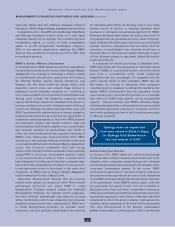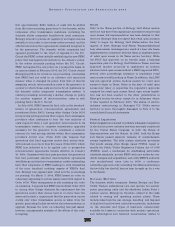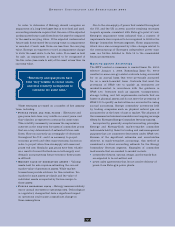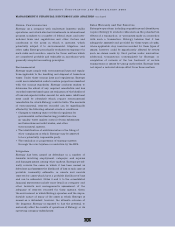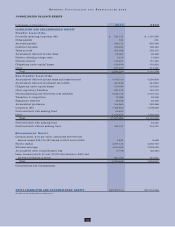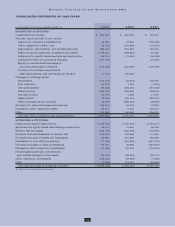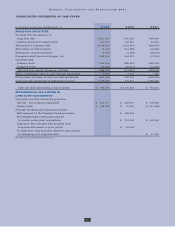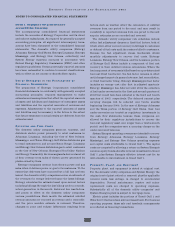Entergy 2003 Annual Report Download - page 49
Download and view the complete annual report
Please find page 49 of the 2003 Entergy annual report below. You can navigate through the pages in the report by either clicking on the pages listed below, or by using the keyword search tool below to find specific information within the annual report.
47
ENTERGY CORPORATION AND SUBSIDIARIES 2003
The following chart reflects the sensitivity of postretire-
ment benefit cost to changes in certain actuarial assumptions
(in thousands):
Impact on
Impact on 2003 Accumulated
Actuarial Change in Postretirement Postretirement
Assumption Assumption Benefit Cost Benefit Obligation
Increase/(Decrease)
Health care
cost trend 0.25% $5,206 $25,979
Discount rate (0.25%) $ 3,278 $29,500
Each fluctuation above assumes that the other components
of the calculation are held constant.
Accounting Mechanisms
In accordance with SFAS No. 87, “Employers’ Accounting
for Pensions,” Entergy utilizes a number of accounting
mechanisms that reduce the volatility of reported pension
costs. Differences between actuarial assumptions and actual
plan results are deferred and are amortized into cost only
when the accumulated differences exceed 10% of the
greater of the projected benefit obligation or the market-
related value of plan assets. If necessary, the excess is
amortized over the average remaining service period of
active employees.
Additionally, Entergy smoothes the impact of asset
performance on pension expense over a twenty-quarter
phase-in period through a “market-related” value of assets
calculation. Since the market-related value of assets
recognizes investment gains or losses over a twenty-
quarter period, the future value of assets will be impacted
as previously deferred gains or losses are recognized. As a
result, the losses that the pension plan assets experienced
in 2002 may have an adverse impact on pension cost in
future years depending on whether the actuarial losses
at each measurement date exceed the 10% corridor in
accordance with SFAS 87.
Costs and Funding
In 2003, Entergy’s total pension cost was $108 million,
including a $47 million charge related to the voluntary
severance program. Entergy anticipates 2004 pension cost
to increase to $87 million due to a decrease in the discount
rate from 6.75% to 6.25% and the phased-in effect of poor
asset performance. Pension funding was $35 million for
2003 and in 2004 is projected to be $110 million due to the
poor performance of the financial equity markets.
Due to negative pension plan asset returns from 2000 to
2002, Entergy’s accumulated benefit obligation at
December 31, 2003 and 2002 exceeded plan assets. As a
result, Entergy was required to recognize an additional
minimum liability as prescribed by SFAS 87. At December
31, 2003 Entergy reduced its additional minimum liability
to $180.2 million ($149.4 million net of related pension
assets) from $208.1 million ($175 million net of related
pension assets) at December 31, 2002. This reduced the
charge to other comprehensive income to $9.3 million at
December 31, 2003 from $11 million at December 31, 2002,
after reductions for the unrecognized prior service cost,
amounts recoverable in rates, and taxes. Net income for
2003 and 2002 were not affected.
Total postretirement health care and life insurance
benefit costs for Entergy in 2003 were $165 million,
including a $64 million charge related to the voluntary
severance program. In December 2003, the Medicare
Prescription Drug, Improvement and Modernization Act of
2003 became law. The Act introduces a prescription drug
benefit under Medicare (Part D) as well as a federal subsidy
to employers who provide a retiree prescription drug
benefit that is at least actuarially equivalent to Medicare
Part D. Currently, specific authoritative guidance on the
accounting for the federal subsidy is pending. Entergy
expects 2004 post-retirement health care and life insurance
benefit costs to approximate $102 million.





